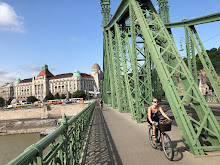
In October 2008 I flew into Lukla, a tiny village airstrip high in the Himalayan foothills, just 10 days after a similar Twin Otter crashed and exploded on landing there, killing all 16 trekkers on board (among them, two Australians) and their Nepalese group leaders. I’ll admit to taking half a Xanax with my breakfast coffee that morning at the Kathmandu Guesthouse before our group headed for the airport.
Our destination was Everest Base Camp, a week’s very challenging walk away. I was fairly confident I could complete the trek. In fact, I’d tacked on a three-week circuit of the Annapurna ranges for afters. But fate had other plans.
It’s possible to walk these high trails independently of an organised group. You can hire guides and porters in Nepal’s capital, Kathmandu, or in Lukla, Phakding or Namche Bazaar. I trekked with a group organised by the Australian company Intrepid Travel (www.intrepidtravel.com), which included three guides and a half-dozen or so porters. Our accommodation was in traditional tea-houses.
Between Lukla and Namche Bazaar, where I spent my 56th birthday, the trails are heavily trafficked. Local Nepalese villagers, sherpas, porters, trekkers and traders make their way up and down the steep stony paths, carrying goods in large bamboo baskets on their backs or on the backs of small Tibetan ponies, cows or yaks. In this first part of the trek, we crossed a number of suspension bridges spanning the milky-green rivers. It’s alpine scenery with a Buddhist bent.
I loved the sounds of the trail: the different animal bells, the flapping of prayer flags strung from inconceivable places, the clickety-clicking of prayer wheels, the steady chipping of axe against stone, the sound of rushing water.
Namche Bazaar, at 3443 metres, appears to cling precariously to the steep slopes at its rear. Our group stayed two nights there, to acclimatise before heading higher into the mountains. On our free day we walked up to 3880 metres, visiting on the way Khumjung sherpa village, home to many of the sherpas who have climbed Everest. Back in Namche I celebrated my birthday with a little retail therapy, a massage before dinner, and a whisky.
Our trek leader, Ram, reminded us constantly that the best way to walk at altitude is slowly: ‘No hurry, no worry.’
The jewel in the crown of Sagarmatha National Park is Mt Everest, but I fell in love with Ama Dablam, which seems to guard the approach to the higher parts of the trail.
On our second acclimatisation day, a two-day walk from Base Camp, about five of us made it to the top of Nagarjan Hill, near Denboche. It was the hardest walking I’ve ever done, over stony, very steep terrain at high altitude (5000 metres). I sat on a boulder on the summit eating a chocolate-covered caramel, while tears rolled down my cheeks. It had been bloody hard work to haul myself up to this place near the roof of the world, but the views from my rocky perch were incredible. I added my small stone to the mound left by others, and began my descent.
Halfway down, my feet slipped out from under me and I fell backwards, landing heavily on my left wrist. When I tried to get to my feet, I felt faint. ‘That’s not good,’ I thought.
I ended up at the Himalayan Rescue clinic in Pheriche, luckily just an hour’s walk from Denboche. Here, the volunteer doctor diagnosed a possible Colles fracture of my left wrist. He put my arm in a splint, and advised me to return to Kathmandu for x-rays and possible surgery. It was incredibly hard for me to accept that I couldn’t go on; in fact, I was a bit of a sook about it.
The next morning I set off with a guide and a porter to return to Lukla. We would need to cover in two days what had taken us four days to walk on the way into the mountains.
Back in Kathmandu, I had consultations with an orthopaedic surgeon at a local clinic. (It was here that I also met one of the organisers of the Everest marathon and half marathon.) Two days later I had surgery at a Kathmandu hospital to insert two pins in my wrist. Four or five days later I was back in Australia.
While fate may have given my attempt to reach Everest Base Camp the finger, it gave a big thumb’s up to another of my plans. An unexpected insurance payout arising from my broken wrist was just enough to pay for my flights to New York a few months later.
Visitors to Nepal are spoiled for choice when it comes to organised treks. Peregrine (www.peregrineadventures.com) and Exodus (www.exodus.co.uk) are two other companies I’ve had experience of who lead Everest Base Camp treks. However, I was happy with Intrepid, and particularly with their local operator, and will probably choose them again when I return to Nepal to pick up where I left off.
DON’T MISS: Kathmandu’s famed Rum Doodle restaurant, the haunt of serious mountaineers; bartering for semi-precious stones in the markets of Namche Bazaar; Ama Dablam.

Hello! I just would like to give a huge thumbs up for the great information you have here on this post. I like the fantastic sights That I have seen. You have added more specific data for the new visitors thanks for this great job,
ReplyDeleteperegrine adventures